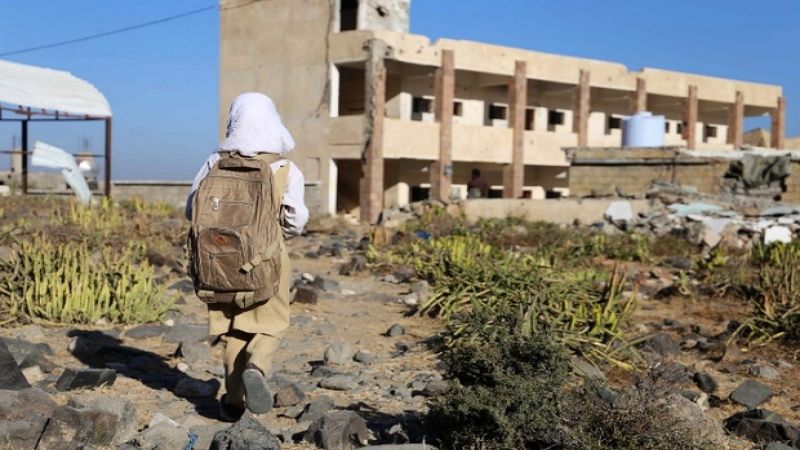
Local Editor
Amal barely survived after a bomb ripped through her school late last year, killing her friends and teacher, and injuring her brother. Now the children can’t sleep at night, haunted by visions of blood and shrapnel-torn skin.
“I have to stay up with my children all night,” explains Amal’s father. “So they don’t panic when they’re sleeping. I ask my wife to hold one child and I hold the other.”
This week the conflict in Yemen entered its third year. Regrettably, Amal’s story is not unique. At least 1,546 children have been killed and 2,450 maimed since March 2015.
Yemen’s education infrastructure has also been under attack. 1.8 million Yemeni children have had their school bombed, shelled or burned. Students and teachers have been killed, injured, arrested or abducted. School facilities have been used by both armed groups and security forces, or used to provide shelter to internally displaced people.
In addition to the lives lost and structural damage to schools, the aerial bombardments and ground attacks – that have characterised the conflict in Yemen – make the routes to school so dangerous that parents are forced to keep their children at home.
But attacks on schools are not unique to the conflict in Yemen.
Robbing children of their right to learn
In the majority of countries affected by conflict over the past decade, armed factions have used schools and turned them into barracks, arms depots and detention facilities, in effect converting them into military targets and exposing children to increased risk of harm.
Students are also vulnerable when they make their way to class; soldiers have been known to snatch children off the streets and forcibly recruit or rape them.
28 million children globally are currently out of school due to armed conflict. Displacement from home, the risk of harm and damage to facilities are all robbing children of their basic human right to learn.
But despite the risks, parents all around the world feel compelled to send their children to school. Children beg their parents to be allowed to go. Education, they say, is one of the things that matters to them most.
This is why it’s so important that we demand an end to the alarming levels of attacks on schools. And why we are calling on all states to join and implement the Safe Schools Declaration.
Demanding action
By joining the Declaration, countries pledge to:
So far, 62 states have endorsed the Safe Schools Declaration. Australia is not among them.
In doing so they have officially committed to amending their military doctrine, training, and legislation to ensure better protection for children in war, while also guaranteeing better reporting of abuses.
Clearly, this is the very least we can ask of our leaders. Ultimately, schools should be providing a safe haven for children during unrest. Attacks on students and their schools strike at the very heart of the senselessness of conflict and it’s crucial we reach a consensus – as a global community – to bring such unthinkable violence to an end.
Save the Children is on the ground in Yemen responding to the dire humanitarian crisis. We protect children by providing safe environments where they can learn, interact and begin to recover from trauma. We are supporting 60 health facilities with essential equipment, medicines and training across the country. We also run mobile medical teams that provide life-saving nutrition interventions. Our programs supporting the crumbling health sector reached over 400,000 people last year, more than half of whom are children. We continue to do everything we can.
Source: Save the Children, Edited by Website Team